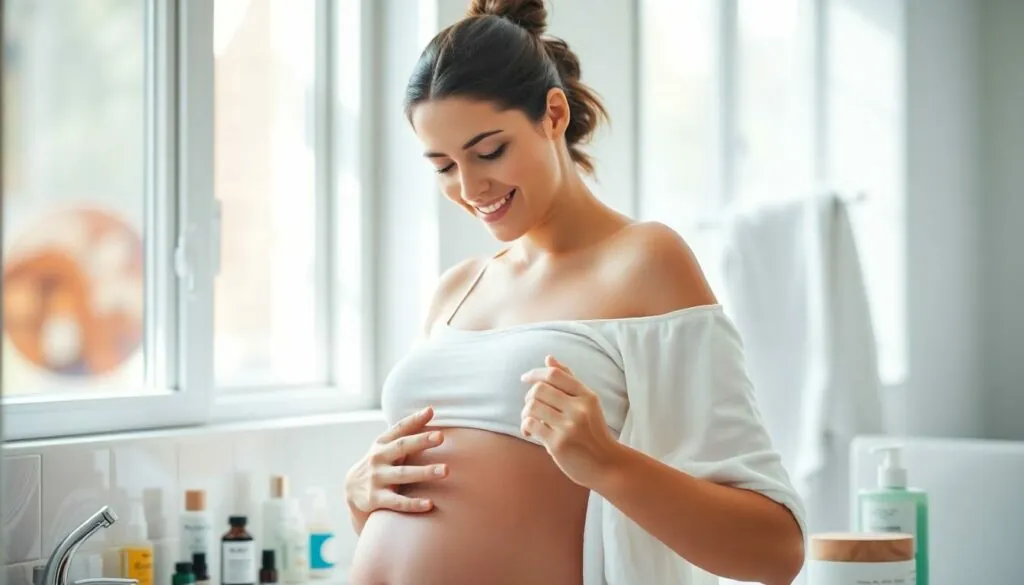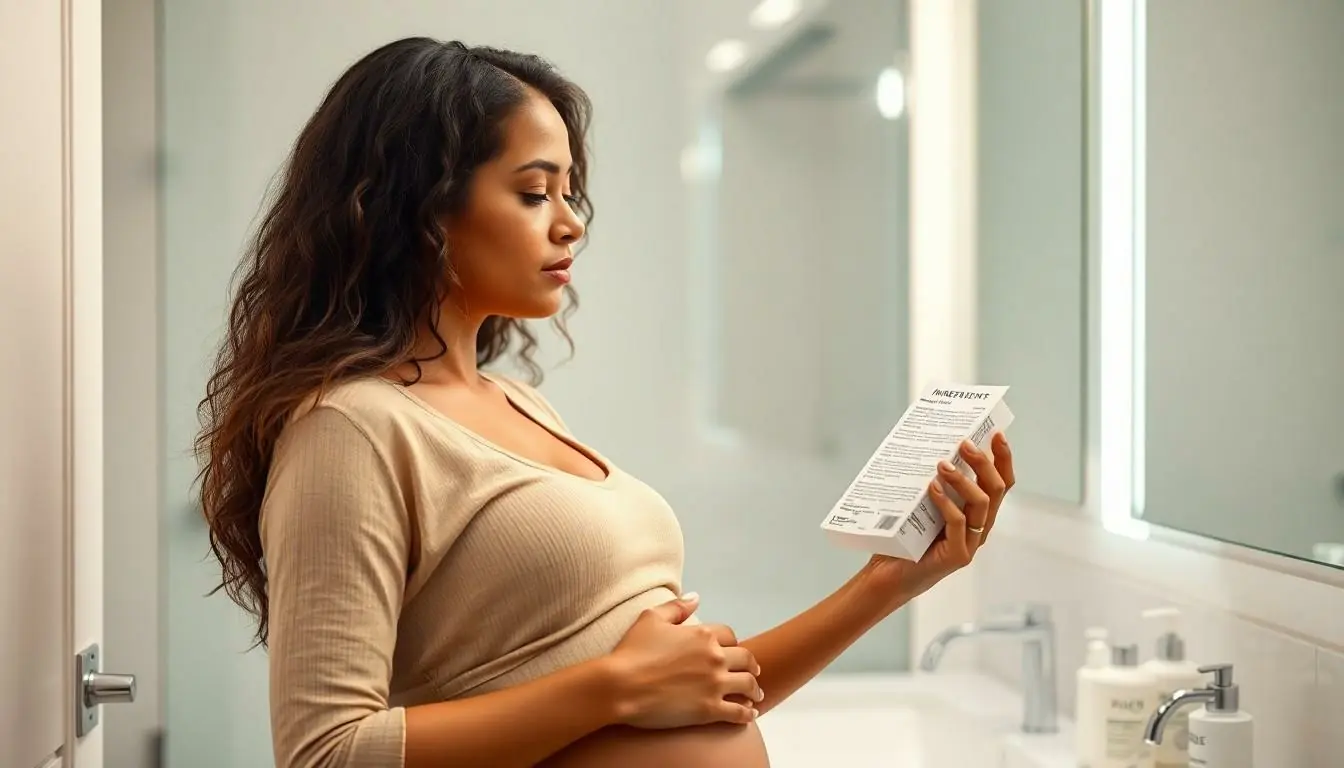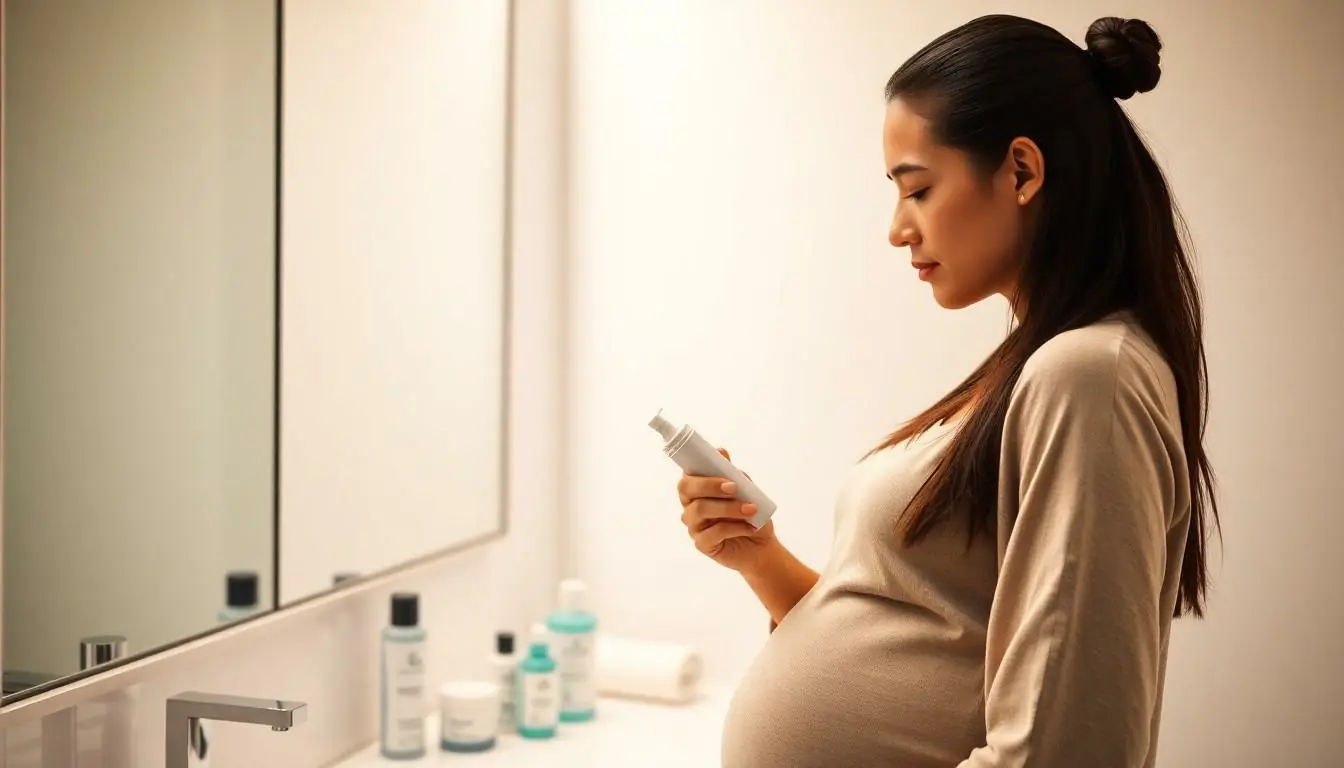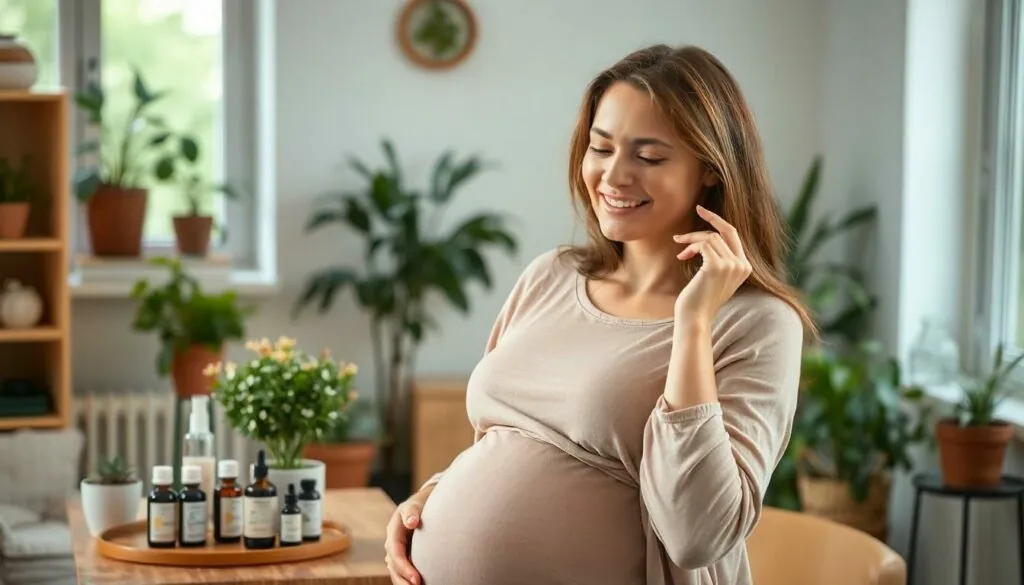Table of Contents
ToggleNavigating skincare during pregnancy can feel like tiptoeing through a beauty minefield. With so many ingredients to avoid and conflicting advice from well-meaning friends, it’s no wonder expectant moms are left scratching their heads at the beauty counter.
Enter the pregnancy safe skincare checker – a game-changing tool that takes the guesswork out of choosing products for that gorgeous pregnancy glow. Think of it as a personal beauty detective, scanning ingredient lists and giving thumbs up or down faster than you can say “morning sickness.” It’s like having a dermatologist and pregnancy expert rolled into one convenient digital assistant.
Understanding Pregnancy Safe Skincare Ingredients
Pregnancy-safe skincare focuses on gentle yet effective ingredients that maintain skin health without risking fetal development. The key lies in selecting products with documented safety profiles during pregnancy while avoiding potentially harmful substances.
Safe Ingredients to Look For
Common pregnancy-safe skincare ingredients include hyaluronic acid, glycerin, vitamin B5 (panthenol) and vitamin C. Hyaluronic acid maintains skin hydration through moisture retention in skin cells. Glycerin acts as a humectant, drawing water into the skin’s surface layers. Natural ingredients like aloe vera, chamomile and green tea provide soothing anti-inflammatory benefits. Peptides support collagen production without penetrating deeply into the skin. Ceramides strengthen the skin barrier while niacinamide (vitamin B3) reduces inflammation and hyperpigmentation.
Ingredients to Avoid During Pregnancy
Retinoids (vitamin A derivatives) top the list of ingredients to avoid due to their link to birth defects. High-concentration salicylic acid penetrates skin barriers and enters the bloodstream. Chemical sunscreens containing oxybenzone pose absorption risks. Hydroquinone affects melanin production and lacks sufficient safety data. Essential oils like rosemary, peppermint and tea tree contain concentrated compounds that cross the placental barrier. Benzoyl peroxide, though common in acne treatments, lacks conclusive safety research during pregnancy. Formaldehyde-releasing preservatives found in some skincare products carry potential risks to fetal development.
How to Check Your Skincare Products
Evaluating skincare products during pregnancy requires a systematic approach to ingredient verification. This process combines careful label analysis with digital tools to ensure product safety.
Reading Product Labels
Product labels contain vital information in three distinct sections: active ingredients, inactive ingredients and warnings. The active ingredients section lists primary components with their concentrations as percentages. Ingredient lists follow a descending order pattern, with higher concentration items appearing first. Common red flags include retinol (vitamin A derivatives), BHA (salicylic acid) above 2% concentration and oxybenzone in sunscreens. Manufacturers use multiple terms for the same ingredient – for example, retinol appears as retinyl palmitate, retinyl acetate or retinyl linoleate.
Using Digital Ingredient Checkers
Digital pregnancy safe skincare checkers streamline the verification process through automated analysis. Apps like Think Dirty, EWG’s Skin Deep Database and The Environmental Working Group scanner provide instant ingredient safety assessments. These tools utilize barcode scanning technology to evaluate product formulations against pregnancy safety databases. The analysis includes detailed explanations of potentially harmful ingredients matched with current medical research. Mobile apps store previous scans creating a personalized safe product list for future reference. Several platforms integrate product recommendations based on skin concerns specific to pregnancy.
Common Skincare Products and Their Safety
Understanding the safety of everyday skincare products becomes essential during pregnancy. Here’s a detailed analysis of commonly used products and their pregnancy safety status.
Facial Cleansers and Moisturizers
Gentle cleansers containing glycerin, ceramides or hyaluronic acid offer safe cleansing options during pregnancy. Fragrance-free cream cleansers maintain skin barrier function without harsh surfactants. Several pregnancy-safe moisturizer ingredients include:
- Squalane for lightweight hydration
- Niacinamide for barrier repair
- Ceramides for moisture retention
- Peptides for collagen support
- Panthenol for skin soothing
Mineral sunscreens with zinc oxide or titanium dioxide provide safe UV protection when incorporated into daily moisturizers. Avoid cleansers containing salicylic acid concentrations above 2% or harsh exfoliating beads.
Treatments and Serums
Pregnancy-safe treatment products focus on gentle actives that address common skin concerns without risk. Safe serum ingredients include:
- Vitamin C (L-ascorbic acid) at 10% or less
- Azelaic acid for hyperpigmentation
- Alpha arbutin for dark spots
- Hyaluronic acid for hydration
- Peptides for anti-aging
- Retinol serums (all forms)
- Chemical exfoliants above 2%
- Hydroquinone treatments
- Vitamin A derivatives
- Essential oil concentrates
| Safe Concentration Levels | Ingredient |
|---|---|
| Up to 10% | Vitamin C |
| Up to 2% | Salicylic Acid |
| Up to 10% | Azelaic Acid |
| Up to 5% | Niacinamide |
| Up to 2% | Alpha Arbutin |
Building a Pregnancy Safe Skincare Routine
Creating a pregnancy-safe skincare routine requires a methodical approach focused on gentle yet effective products. The following morning and evening routines incorporate safe ingredients while maintaining skin health during pregnancy.
Morning Skincare Steps
- Cleanse with a gentle pH-balanced cleanser containing glycerin ceramides
- Apply alcohol-free toner with chamomile aloe vera
- Layer vitamin C serum (10-15% concentration) for antioxidant protection
- Add hyaluronic acid serum for deep hydration
- Moisturize using products with ceramides niacinamide
- Finish with mineral sunscreen (zinc oxide titanium dioxide)
Key timing notes:
| Step | Wait Time |
|---|---|
| After Cleansing | 30 seconds |
| Between Serums | 2-3 minutes |
| Before Sunscreen | 5 minutes |
Evening Skincare Steps
- Double cleanse with oil-based cleanser followed by gentle water-based cleanser
- Apply alcohol-free toner with green tea peptides
- Use azelaic acid serum (10% concentration) for spot treatment
- Layer hyaluronic acid serum for overnight hydration
- Apply peptide-rich moisturizer with squalane
- Add facial oil with safe ingredients (jojoba marula rosehip)
| Product Type | Amount |
|---|---|
| Cleanser | Dime size |
| Serum | 3-4 drops |
| Moisturizer | Pearl size |
| Facial Oil | 2-3 drops |
Natural and Organic Alternatives
Natural skincare alternatives provide safe options for expectant mothers seeking chemical-free products. These solutions incorporate plant-based ingredients proven effective for maintaining healthy skin during pregnancy.
DIY Skincare Solutions
Homemade skincare recipes utilize pregnancy-safe kitchen ingredients to create effective treatments. Raw honey serves as a gentle cleanser antimicrobial properties. Plain yogurt contains lactic acid for mild exfoliation at safe concentrations. Coconut oil offers deep moisturization benefits through its fatty acid content. A simple oatmeal mask reduces inflammation without harsh chemicals:
- Mix 2 tablespoons ground oatmeal with 1 tablespoon honey
- Add 1 teaspoon plain yogurt for extra hydration
- Apply for 10 minutes before rinsing with lukewarm water
Green tea ice cubes reduce puffiness when applied directly to skin. Mashed avocado creates a nutrient-rich face mask packed with vitamins E K.
Clean Beauty Brands
- Pai Skincare: Creates organic products certified by soil association standards
- Beautycounter: Bans 1500+ questionable ingredients from formulations
- Tata Harper: Uses 100% natural ingredients sourced from organic farms
- Honest Beauty: Maintains strict ingredient screening protocols
- Biossance: Produces sustainable skincare with plant-derived squalane
| Brand | Key Certification | Primary Safe Ingredients |
|---|---|---|
| Pai | Soil Association | Rosehip Oil Chamomile |
| Beautycounter | EWG Verified | Vitamin C Ceramides |
| Tata Harper | USDA Organic | Aloe Calendula |
| Honest | EWG Verified | Hyaluronic Acid Shea |
| Biossance | Leaping Bunny | Squalane Vitamin C |
Conclusion
Navigating skincare during pregnancy doesn’t have to be overwhelming. With pregnancy-safe skincare checkers expectant mothers can confidently build a routine that nurtures their skin while protecting their baby’s development.
These digital tools combined with knowledge of safe ingredients empower women to make informed choices. Whether opting for gentle commercial products or natural alternatives there are plenty of effective options to maintain healthy glowing skin throughout pregnancy.
The key is staying informed and using available resources to verify product safety. Armed with these tools and understanding pregnant women can enjoy effective skincare while keeping their peace of mind during this special time.






